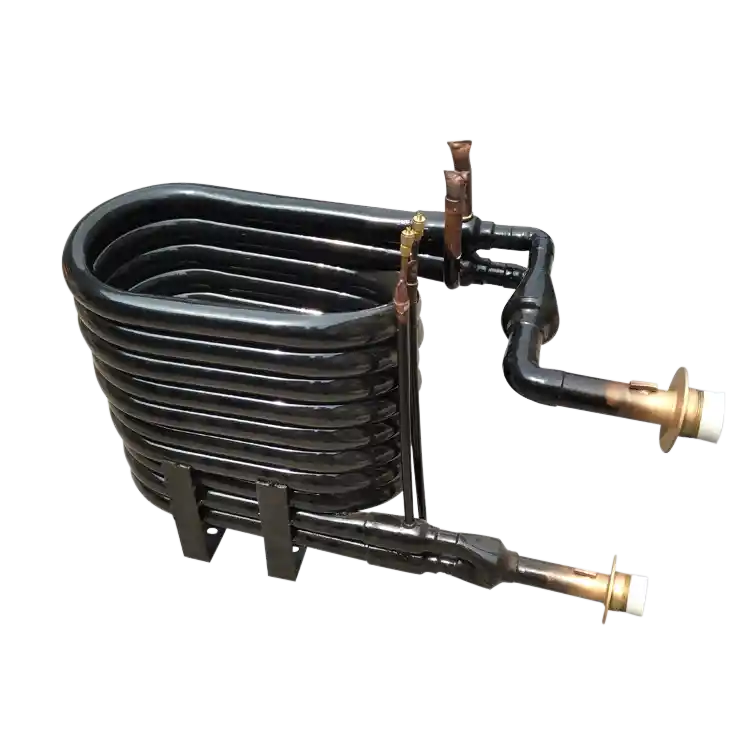1. Introduction
The pressure heat transfer efficiency testing is a crucial quality control measure in the production process of coaxial heat exchangers. This testing ensures that the heat exchanger operates with optimal heat transfer performance while maintaining the specified pressure conditions. In this article, we will explore the significance of pressure heat transfer efficiency testing, testing methods, and the interpretation of test results in the context of coaxial heat exchangers.
2. Importance of Pressure Heat Transfer Efficiency Testing
Pressure heat transfer efficiency testing is important for the following reasons:
2.1 Performance Optimization
By evaluating the heat transfer efficiency under varying pressure conditions, manufacturers can identify any inefficiencies or deviations from the desired performance standards. This testing helps optimize the design and operation of the coaxial heat exchanger for improved heat transfer efficiency.
2.2 Energy Conservation
Efficient heat transfer reduces energy consumption in heating and cooling processes. By testing the pressure heat transfer efficiency, manufacturers can ensure that the coaxial heat exchanger maximizes energy conservation while maintaining the required pressure levels.
2.3 Quality Assurance
Pressure heat transfer efficiency testing is an integral part of quality control, as it ensures that the heat exchanger meets the specified performance requirements. By verifying the heat transfer efficiency, manufacturers can deliver reliable and high-quality coaxial heat exchangers to their customers.
3. Testing Methods for Pressure Heat Transfer Efficiency
Several testing methods can be employed to evaluate the pressure heat transfer efficiency of coaxial heat exchangers:
3.1 Heat Transfer Coefficient Calculation
The heat transfer coefficient can be calculated using empirical correlations or numerical simulations based on the heat exchanger’s design and operating conditions. This method provides an estimate of the heat transfer efficiency based on theoretical calculations.
3.2 Experimental Heat Transfer Analysis
Experimental analysis involves conducting tests on the coaxial heat exchanger using controlled conditions and measuring the heat transfer rate. This method provides direct data on the heat transfer efficiency under different pressure conditions.
3.3 Computational Fluid Dynamics (CFD) Analysis
CFD analysis simulates the fluid flow and heat transfer processes within the coaxial heat exchanger using computational models. By analyzing the CFD results, manufacturers can evaluate the pressure heat transfer efficiency and identify areas for improvement.
4. Interpreting Test Results
Interpreting the results of pressure heat transfer efficiency testing requires a comprehensive analysis of the data obtained. The following factors should be considered:
4.1 Heat Transfer Coefficient
The heat transfer coefficient obtained from calculations or experimental measurements indicates the efficiency of heat transfer within the coaxial heat exchanger. Higher values of the heat transfer coefficient represent better heat transfer efficiency.
4.2 Pressure-Heat Transfer Relationship
Analyzing the relationship between pressure and heat transfer efficiency provides insights into the performance characteristics of the coaxial heat exchanger. Manufacturers can identify the optimal pressure range for achieving the desired heat transfer efficiency.
4.3 Deviation from Design Specifications
Comparing the test results with the design specifications helps identify any deviations or discrepancies. Manufacturers can assess whether the coaxial heat exchanger meets the intended performance targets and make necessary adjustments if required.
5. Conclusion
Pressure heat transfer efficiency testing is a critical aspect of quality control in the production of coaxial heat exchangers. By evaluating the heat transfer efficiency under different pressure conditions, manufacturers can optimize performance, conserve energy, and ensure the delivery of high-quality heat exchangers. Accurate interpretation of test results enables manufacturers to make informed decisions and continuously improve the design and operation of coaxial heat exchangers.


